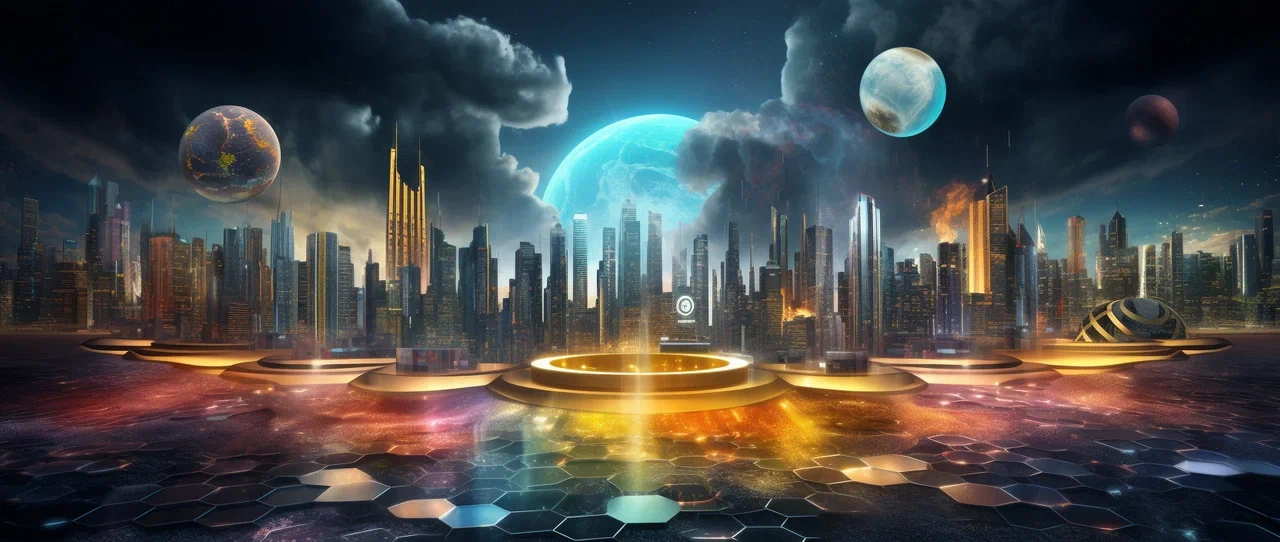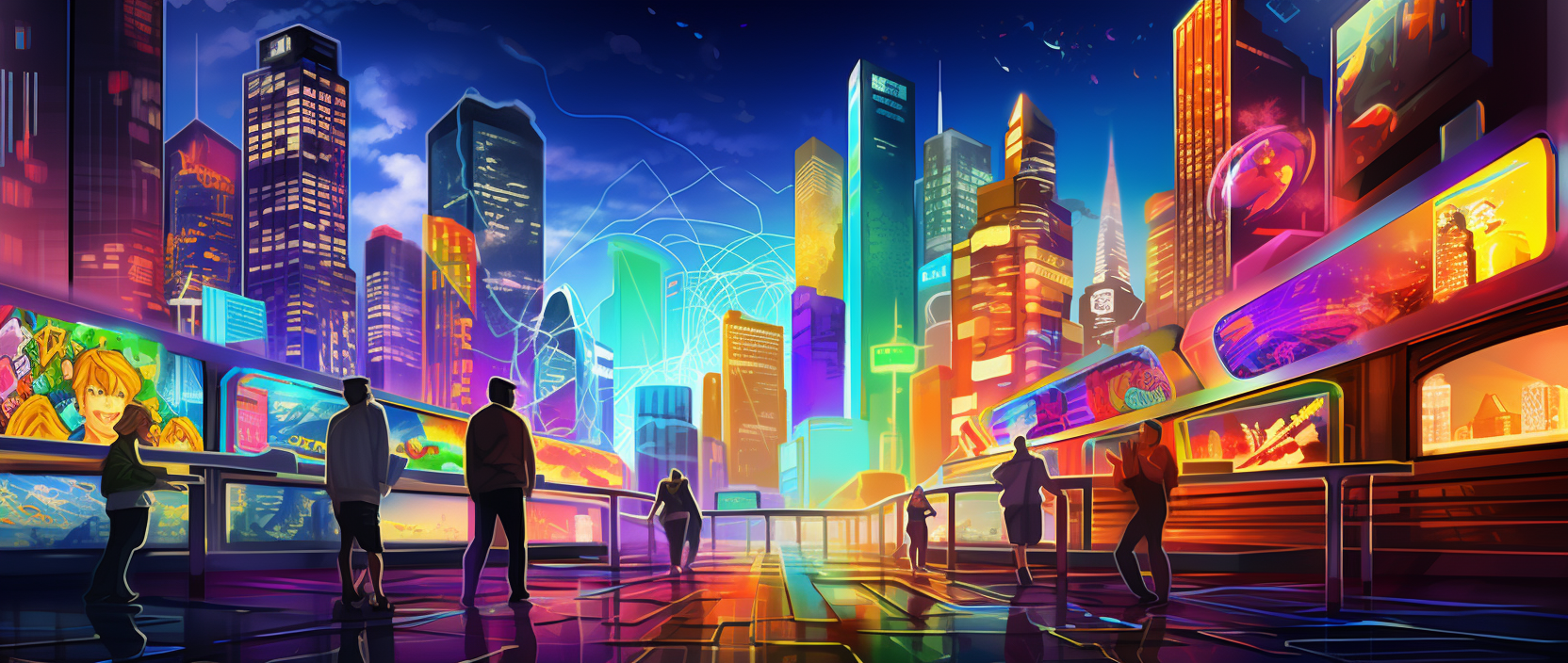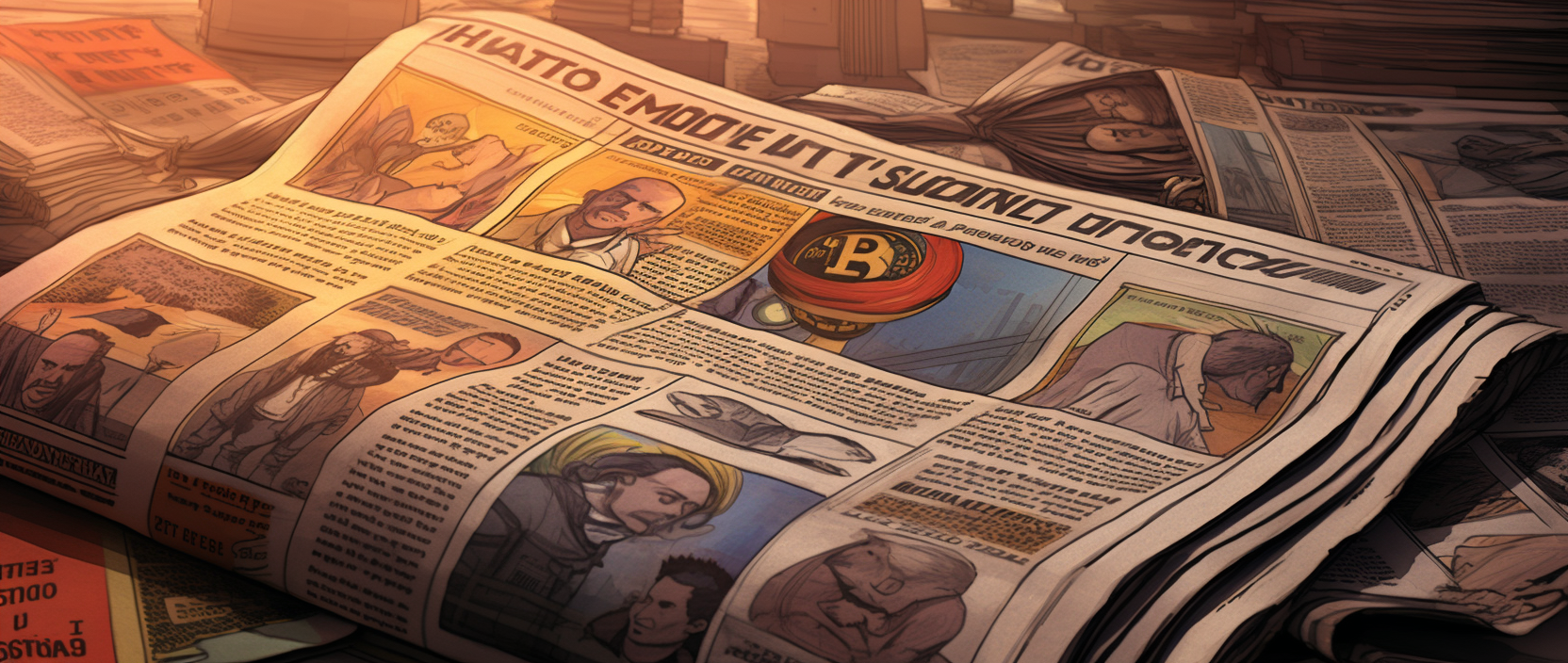NFT - Non-Fungible Tokens — over the past few years, NFTs have established themselves as one of the most significant contemporary innovations in technology, finance, fashion, sports, and art. They are transforming everything from finance to art. If you're new to cryptocurrencies and digital assets, understanding NFTs may be challenging. However, after reading this article, you will be able to find answers to all your questions about NFTs.
Contents:
- What are NFTs?
- How do NFTs differ from cryptocurrencies?
- Why own a non-fungible token?
- How to create, buy, and sell NFTs
- Using NFTs and ownership rights
- Types of NFT fraud
- A brief history of non-fungible tokens

What are NFTs?
NFTs are unique, non-fungible tokens, each of which is unique and cannot be exchanged or replaced with another similar token. NFT tokens are certificates confirming the authenticity of digital art objects. If you buy something with an NFT, you will own the original, no matter how many reproductions of that item exist on the internet. This allows for proof of ownership. The data contained in NFTs can be associated with digital images, songs, videos, avatars, gaming items, and much more. However, they can also be used to provide the owner with access to exclusive goods, tickets to offline or online events, and more. In addition, they can be used to tie to physical assets such as cars, yachts, and more.
Steps for creating NFTs:
- An individual (or company) selects a unique asset to sell as an NFT.
- They add the object to a blockchain that supports NFTs through 'minting'.
- Now the NFT represents this item on the blockchain, verifying proof of ownership.
- The NFT can be stored as part of a private collection or bought, sold, and exchanged on trading platforms and auctions.
As you can understand, the process of creating such a token is intuitively clear to every user.
How do NFTs differ from cryptocurrency?
Like the money in your bank account, cryptocurrency is what you use for any transactions on the blockchain. Cryptocurrency can be bought or converted into fiat currencies via crypto exchanges. In contrast, an NFT is a unique and irreplaceable asset that can gain or lose value independently of the currency used to purchase it.
In this respect, NFTs are non-fungible, while cryptocurrencies are fungible.
To better understand this, it makes sense to think about traditional money. A one-dollar bill represents the same thing. It can be exchanged for any other one-dollar bill. This is because the US dollar is fungible, as is cryptocurrency. They are not unique and can be easily sold and replaced with the same equivalent. NFTs, however, are non-fungible in the sense that no two are alike. Each such token is a unique unit of data that cannot be replaced with a similar version.
When it comes to NFTs, uniqueness and rarity enhance their appeal and desirability. And, as with all rare items, this scarcity allows people to sell them at premium prices.
Why own a non-fungible token?
The demand for NFT art has skyrocketed. However, there is still much skepticism. After all, this type of token is usually tied to digital files.

Let's consider some of the main reasons why people own NFTs.
| Parameter | Description |
|---|---|
| It expands opportunities for artists | With NFTs, artists can independently create and sell works, retaining intellectual property and creative control. NFTs create fairer trading models and provide financial support to creators. |
| Collectibility | A 1952 Mickey Mantle rookie card sold for $5.2 million, though it cost less than 5 cents to produce. NFTs offer a similar opportunity for digital asset collection, emphasizing rarity and cultural significance. |
| Investment | Some NFT owners view non-fungible tokens as investments, expecting their value to increase. For example, Beeple's Everydays: The First 5000 Days sold for $69 million at Christie's in March 2021. |
| Community | NFT ownership fosters a sense of community. Many creators turn their projects into active communities, offering private club access for token holders and enabling participation in project votes and events. |
Some may find this strange. After all, anyone can see and interact with a digital image. However, only one person can be the owner of a given NFT. For some, that's enough.
Creating, Buying, and Selling NFTs
To start buying and selling NFTs, you need to go through some mandatory steps. The first step is to get a crypto wallet that allows you to store and transfer digital assets.
There are two main types of crypto wallets:
- Software wallet: an application that you can install on your device. These wallets are more convenient for short-term transactions on the network. However, they are more vulnerable to hacking attacks.
- Hardware wallet: a physical device for storing crypto assets, physically resembling a USB drive. These wallets are completely isolated from the network, making the assets stored in them often considered maximally secure.

Whether you're buying a token or creating your own NFT, you'll need cryptocurrency. To understand which asset you need, familiarize yourself with the platform you plan to interact with. Also, an important thing to consider is whether you plan to create one NFT at a time or an entire collection.
Creating a non-fungible token (minting) has an initial cost. In most cases, you only need to pay the minting fee. However, sometimes trading platforms charge additional fees.
We suggest you pay attention to several platforms that might meet your interests. OpenSea is the most popular NFT trading platform with over 1 million active wallets. LooksRare and Rarible are two of OpenSea's most formidable competitors. They are suitable for you if you want to create your own digital art collection.
If you plan to mint 1 asset, platforms like SuperRare, Foundation, and Zora are the best fit.
The minting process will vary slightly for each online platform. However, usually, you will simply need to upload the file that you want to associate with your token. This procedure involves linking specific data — NFT — with a particular asset or object. And then pay for the transaction using the cryptocurrency of the network used on the platform.
After completing the process, you will have all the necessary information about your new NFT, and it will be registered in your digital wallet. Now you can keep it for yourself, sell it or exchange it as you see fit.
Using NFTs and Ownership Rights
NFTs have a nuanced relationship with the assets they are associated with. Typically, tokens represent the original physical asset on the network: a painting, a song, etc. However, they are actually considered a separate object from any content they contain.
For example, if you have a postage stamp or a popular trading card from a collectible card game, you own the image of the original work on the network, but not the original physical work itself. The copyright to the image, design, and branding of the card you own belongs entirely to the card manufacturer. Similarly, owning an NFT does not transfer to you the intellectual property or rights to use that original work.
Of course, there are exceptions to these strict rules. The Bored Ape Yacht Club publicly stated that all BAYC NFT owners have full commercial rights to these assets. It can be monetized if the owner deems it appropriate. Some projects, like CrypToadz and Nouns, have gone further, releasing their intellectual property into the public domain under a Creative Commons license (known as CC0). But they should be seen as the exception, not the rule.
Platforms like OpenSea allow any user to create NFTs using copyrighted content, i.e., content they do not own. This is risky for the producer, buyers, and the original artist for a number of legal reasons.

In the case of sales made through official websites like Art Blocks or NBA Top Shot, buyers can act confidently, knowing that their NFT comes from a legitimate source.
Types of NFT Fraud
NFTs are still a new phenomenon. As a result, the market is vulnerable to scammers who may take advantage of unsuspecting collectors.

Here are some types of fraud and market problems to be wary of.
Rug Pulls
Although collectors prefer large projects, figures are not always safe, and no NFT project is without risk. In fact, many projects have collapsed due to fraudulent activities. Rug pulls occur when project creators take investment money for the project and disappear. Having run off with all the money, the team leaves collectors with a worthless asset.
Fake Increase in Trading Volume
As with stocks and other collectibles, market manipulations can occur during NFT auctions. Working together, a group of scammers can raise the price by artificially inflating demand for the asset until an unsuspecting buyer joins in purchasing the NFT. After the sale, the asset depreciates, leaving the buyer with a worthless token. One of the most common ways to do this with NFTs is through wash trading. This trading occurs when a user controls both sides of a transaction, being one person. That is, selling an asset from one wallet and buying it from another.
When many such transactions occur, trading volume increases. As a result, it seems that the underlying asset is in high demand. This leads to an increase in the value (price) of the considered NFT.
Phishing Scams
Whether through fake advertising, NFT giveaways, or some other form of coercion, scammers sometimes request keys to your private wallet or other confidential information, such as your seed phrase.
Depending on the information they access, the scammer can then access your wallet and withdraw any cryptocurrency or NFT stored in it. Since the blockchain is decentralized and often anonymous, there is usually no way to recover your assets if this happens.
Just like phishing emails with passwords. These fraudulent activities come in various forms and can be very difficult to detect. Reminder: never share your seed phrase or private keys from your electronic wallets with anyone, otherwise, they can access your funds. Only follow links from official websites and accounts.
A Brief History of Non-Fungible Tokens
The First NFTs
The first ever created NFT is called «Quantum». It was created by Kevin McCoy on Namecoin in 2014. In the following years, several other assets were launched on blockchains. For example, Spells of Genesis in 2015 is considered the first blockchain game with NFTs. Rare Pepes was released in 2016 and helped launch the first crypto-art market. However, this project did not gain widespread popularity.
NFTs began to gain momentum among a wider consumer audience only in 2017. Around the same time, the first collections were launched on the Ethereum blockchain. Ethereum's network features simplified the process of interacting with this type of asset and expanded access.
Until 2021, two factors possibly helped to increase prices and accelerate public interest. The first was the COVID-19 pandemic, which forced many people to become more digital. The second was Beeple. The long-time artist turned into an NFT pioneer when he became the first creator to sell an asset at a major auction house. Soon followed new sales amounting to millions of dollars.

While digital art and collectibles largely contributed to the boom of 2021, there are numerous additional decentralized applications that were launched around the same time and garnered attention. There are NFT-based virtual worlds like Decentraland and CryptoVoxels, and blockchain-based games with Non-fungible tokens, such as Axie Infinity and Zed Run.
As adoption grew, so did sales volumes and prices. This sparked a surge of interest from companies and brands looking to launch their own NFT projects and capitalize on market growth. Companies like Coca-Cola and Taco Bell created non-fungible tokens for popular food and beverage products. Other brands, such as Hot Wheels and Adidas, started selling NFTs linked to their physical products.
The Future of NFTs
Right now, NFTs are still in their early stages of development. It is widely believed that they could play a certain role in metaverses, mainly serving as a digital representation of physical objects that you own.
However, some skeptics claim that NFTs have no future. Rather, they say, it's just a fleeting fad and ultimately may be relegated to a niche part of a larger market, similar to the trajectory of collectible card games and other vintage collectibles.
Given how young NFTs are at this moment, the only way to know for sure is to wait and see.
One thing is certain, NFTs are perfectly suited for hobbyist collectors who want to support content creators, be part of a community, or own a small piece of what they are passionate about.



